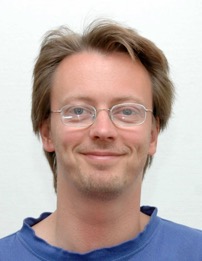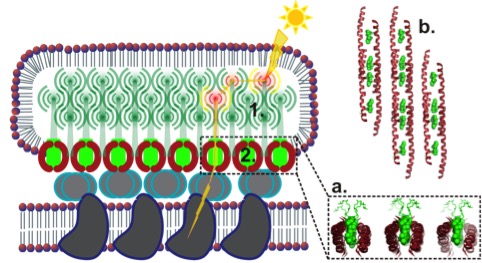Jakob Toudahl's article in Nature Comm on how extreme bacteria photosynthesises in the dark
The discovery may eventually provide better solar cells

Jakob Toudahl Nielsen from Center for Insoluble Protein Structures (inSPIN) at iNANO has published In situ high-resolution structure of the baseplate antenna complex in Chlorobaculum tepidum in Nature Communication.
Bacterial photosynthesis is at once brilliant and treacherous difficult to understand. Now it managed a research team with Danish management to find the final piece of a major puzzle - and thus achieve a breakthrough in efforts to understand how one of nature's extreme survivors collect energy from the sun.

The illustration shows a klorosom here, as it sits on the bacteria, and which allows the bacteria to live in the extreme positions where it has found its niche. In this embellished version, you can see how the energy of light is picked up and headed down to the organism.
To read the whole article Something new under the sun by Rasmus Rørbæk at AU
To read the story in Videnskab.dk
Læs den videnskabelige artikel hos Nature Communications her (åbner i nyt vindue)
Læs om NMR-spektroskopi på Aarhus Universitet her
Kontakt:
Adjunkt Jakob Toudahl Nielsen,
Aarhus Universitet,
Telefon: 87156654,
Email: jtn@inano.au.dk
Lektor Niels-Ulrik Frigaard,
Københavns Universitet,
Telefon: 20676710,
Email: nuf@bio.ku.dk
Professor Niels Chr. Nielsen,
Aarhus Universitet,
Telefon: 87155913,
Email: dean.scitech@au.dk
